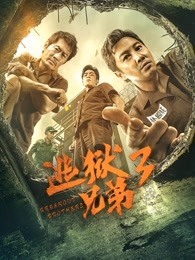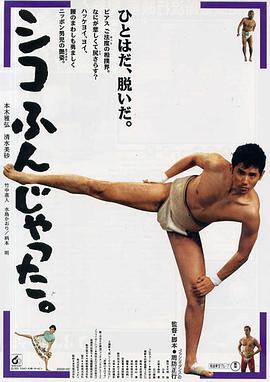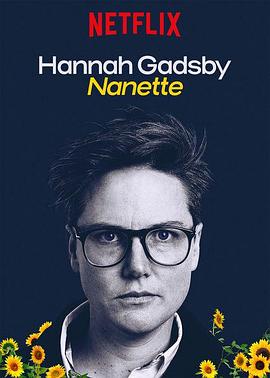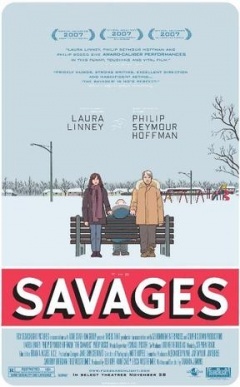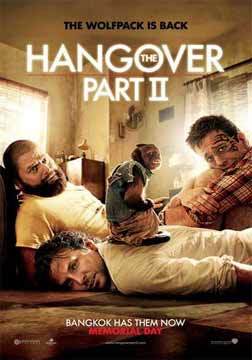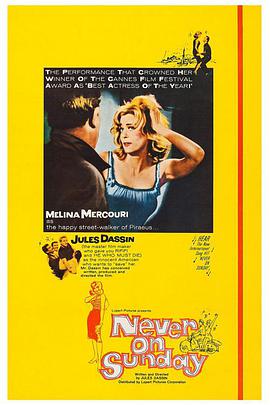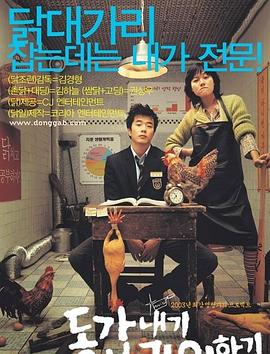- 光线云1
- 光线云2
- 正片
- 正片
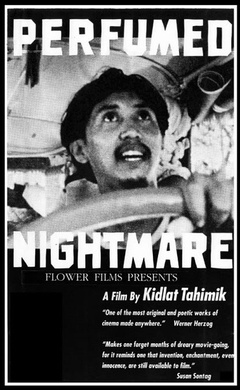
甜蜜的梦魇
- 主演:
- Mang,Fely,Dolores,Santamaria,Georgette,Baudry
- 备注:
- HD中字
- 类型:
- 喜剧片
- 导演:
- 奇拉·塔西米克
- 年代:
- 1977
- 地区:
- 英语
- 语言:
- 英语
- 更新:
- 2023-01-20 13:18
- 简介:
- 塔希米是小巴驾驶员,每天要去马尼拉城内拉客赚钱,他对美国的任何事物都很感兴趣,无论是电影、音乐、还是他的梦中情人-美国小姐,他每天必听的电台是“美国之声”,尤其对老美的太空计划着迷,特崇拜从东德叛逃的火箭科学家WernerVonBraun,还在村里组了一个WVB迷协会.....详细
塔希米是小巴驾驶员,每天要去马尼拉城内拉客赚钱,他对美国的任何事物都很感兴趣,无论是电影、音乐、还是他的梦中情人-美国小姐,他每天必听的电台是“美国之声”,尤其对老美的太空计划着迷,特崇拜从东德叛逃的火箭科学家WernerVonBraun,还在村里组了一个WVB迷协会,招收当地一些小孩做会员,并通过卖冰棒为菲律宾小姐的选美活动筹款。塔希米认为村子在逐渐退化,跟不上时代的步伐,村民们落后的生活方式让他感到悲哀,甚至内心看不起从小一起长大的朋友,因为他现在是竹屋工匠,尽管建造竹屋是菲律宾人的传统技艺,但现在已经没有多少人愿意学了,而塔希米想要的是更宽敞明亮的楼房,想要过一种更现代化的“国际生活”。某天在路上他结识了一个美国商人,商人正需一私人司机,于是塔希米和他一起来到了巴黎。在巴黎的生活起初让他感到新鲜不已,但随着他唯一的朋友,一个巴黎街头的小商贩因受到附近超级市场的行业欺压和迫害而无法经营最后自杀,塔希米开始对这个金钱至上的资本主义社会产生了疑问,为什么这个世界首先需要的是超市?为什么无数旧楼房被推倒后还要在上面建起更豪华的别墅?他试图用自己的方式对抗,但很快意识到无用,并及时从梦中觉醒,重返了家乡。
The Nightmares haunted in the land
—— culture memories intertwined
Perfumed Nightmares ( 1977 ) is an initial essay film created by the Philippine indie filmmaker, Kidlat Tahimik, who formed an inestimable basis for the exploration of cutting-edge films in the period of Marcos’s dictatorship. Kidlat Tahimik served as a peerless/inimitable storyteller, revolving reminiscent and personal memories haunted in a primitive small hill Baguio, where he grew up, and expressing a sense of complex, ambivalent under the so-called evolution in the history and culture in the Philippines.
Ⅰ Background
Different from those who focus on traditional narrative films and documentaries, Kidlat was a pioneer of avant-garde film in Philippines who mingled performance and documentary, memories and imagination, blurring the boundary between fiction and non-fiction. It is a sort of subjective cinema and essay films that have flourished in the western world until nowadays since 1960s. Numerous famous directors, e.g. Joris Ivens, Jean-Luc Godard, Chris Marker, Orson Welles and Werner Herzog etc. have unexceptionally turned to experimental films. Coincidently, it was in Kidlat Tahimik’s post-college years in Munich when he made an acquaintance with Werner Herzog, who became his mentor later and significantly influenced his concept on filmmaking.
In The Personal Camera: Subjective and the Essay Film, Laura Rascaroli has sorted out various directors, from Harun Farocki to Sokurov, Antonioni, and expounded their productions of essay films. These filmmakers mainly concern about history, memory and politics. Godard is a representative during the 1960s who devoted himself into “A blow of the Eastern”. Nevertheless, they inevitably, based on a western perspective, held misconception and prejudice towards the east, while most eastern countries were suffering from a miserable, painful, and provokable dictatorship in the name of socialism. Developed as Japan was, they consider it as a symbol of the empire filled with mysteriousness. It was in Tokyo-Ga, Japan (1985, Wenders) that Chris Marker, Werner Herzog and Wim Wenders exceptionally came across. What would they judge “Asia” as? It is still a perspective in “other” when they were astonished or disappointed at the Orient. Instead of the issues relevant with military, gun or legal provision, they devoted attention to theory, culture and media. Thus, we could pose the question related to postcolonialism after the liberation movement in the third world.
It is on the very point that Perfumed Nightmares stands out among numerous films in the local, breaking the ice that plenty of genre films and so-called films refelcted social problems in Philippines in the past (as is known that is the manner of Lino Brocka and Mike De Leon ). Kidlat, since then, have committed to creating works different from narrative films, and also made attempts towards experimental folk music, performances and installations. This contributed to Philippine New Wave to a certain degree, when those indie filmmakers had a chance to embrace digital technology, obtain access to capture portrayal as western countries did, and express whatever they wanted. Consequently, synchronous progress has emerged—a truly independent voice and idea have come into being, without an arbitrary viewpoint expected as “other” — compared with the Europe and America.
ⅱ A trauma and fantasy to America
An ambivalence between the subconscious, remaining trauma and yearning expectation has intertwined in the heart of the protagonist Kidlat Tahimik in Perfumed Nightmares. The director fabricated a semi-fiction according to his autobiography. In this essay film, Kidlat Tahimik is a driver and hand-maker of jeepneys. On the one hand, he dreams of being an engineer in America; on the other hand, he has always kept the unforgettable history of colonisation under America in his mind. These two contradictory forces push the protagonist into a dilemma. Thus, both nightmares and imaginations have haunted in the land and flowed with subjective consciousness through montage.
Kidlat Tahimik grew up in Baguio, a town he highlights in this essay. With the monologue at the very beginning, he introduces a piece of basic history regarding a bridge, built by Spanish soldiers after the primitive village had been destroyed by them, then invaded by American for escaping from the muggy weather in the American colonial period. However, thanks to a precipitous terrain, they failed to get completely inside due to the strong wind from the hill. In the past, especially before 14 BC, the ancestors mainly consisted of Ibalois and other Igorot ethnic groups, leading a disengaged life and dwelled in a floral place. As the history professor Michael Szonyi expounds the untrammelled situation in his book The art of not being governed:
A Spanish official in the Philippines in the mid-seventeenth century describes the Chico River hill population in terms that both stigmatize their statelessness and convey a hint of envy: “They were so free, so completely without God or law, without King or any person to respect, that they gave themselves freely up to their desires and their passions.”
Likewise, Baguio, the town captured by this essay film, suffered an analogous invasion and defence on account of its peculiar hills in the tropical region. Therefore, Kidlat Tahimik emphasised the blow of winds from hills in a poetic way, representing a feature of Baguio and related to the history of colonisation.
However, the sense of national identity was not clear before his departure from hometown. What haunted in his mind is a brilliant blueprint in America, rather than a trauma. The radio functions as a media of publicity, while the program of The Voice of America is a repeated element in the film. Meanwhile, a spectrum of collages of cover-girls from America manifests a distinguished consumer culture in modern, increasingly affecting this relatively primitive ethnic group. Such a difference is also indicated after his working experiences in Europe. In his initial opinion, it is enough to feel astonished when he made his first step to escalators and a mass of buildings. Thus, post-colonism has rooted through the multitudinous media and the so-called modern civilisation.
Then, what is the factor that disrupts the determination of the protagonist? We can soon find that this essay film is not dominated by a single voice; apart from the monologue of Kidlat, we can hear voices from other storytellers. His friend, a man with a tattoo of a butterfly, orally relates a miserable piece of history to the death of Kidlat’s father , who served as a local protector but stabbed by American soldiers with guns in the stage of colonisation. In the film, actors perform in a departed scene of antique with substandard quality, more than once breaking the wall between non-fiction and fiction. Similarly, to reveal the memory of Kidlat, he invited children to portray himself in his childhood, a scene of circumcision reemerging then, under the background of white terror.
It is worth noting that the process of oral history is somewhat lapsible and uncertain, and individual memories are sometimes likely to be contorted. That is what Kidlat has got involved into in this sequence. It was not before the friend had represented a massacre that Kidlat recalled what he witnessed under the white terror. Then, there is a doubt posed amongst the dialogue, i.e. whether the fascinating impression of America is decisive and the trauma seldom exists. Specifically, the oral history and memories in the interaction and the dialogue alter an initial judgement towards events, recalling the amnestic but more authentic memory. Furthermore, why did he forget such a trauma happened in his childhood? It could be thought of as two sides of memories— remembering and forgetting. That is, the absence of himself and the unofficial memory of not repeated lead to forgetting and impaired a sense of remembrance. As A. Erll expounds in Memory In Culture:
Totall recall, after all, the complete memory of every single event in the past, would amount to totall forgetting, for the individual as well as for the group or society.
In this sense, those unduplicated memories and pieces of history could be conveyed through vision, sound, as well as a clip of fiction, to prevent subtle events being forgotten or distorted with time lapsing.
Different from the oral history, the conception of splendid America has been continuously constructed through the mass media, as what I have mentioned above related to America. The current culture memory is highlighted when Phillipines comes into the state of independence, but under a sort of post colonization. Apart from the radio reports and the collages of magazine, American also print the thrilling sensation—the first astronaut landing in the moon—in stamps. Compared with the local history full of scar, media-supported tools construct a kind of communicative memories in a more permanent and deeper way.
In addition to studies on the general culture memory in the field of western philosophy, what we should pay attention to is concerned about the localization of it, with two contradictory ways of memory appearing. There is no superiority or inferiority between those methods.
ⅲ The nostalgia in imagination and nightmares
The interlace of trauma and fantasy drives him into a higher level, but also bringing about a homesick sense in the course of working aboard. Life went smoothly at the stage of his initial arrival of Europe, nevertheless, with his longer accommodation, he was soon caught in reminiscence. The comparison between things in Europe and in homeland is no longer demonstrating a prejudge of discrepancy; or rather, it indicates the diversity of lifestyle, without the exact superiority.
Here are some parallel clips inserted in the sequence took place overseas. When concrete buildings are under construction in metropolics, an image in which groups of people build a primitive house with tree branches occurs in this sequence. In this semi-fiction film, the author keeps a certain perspective of post-colonial criticism all the time, but blending those intricated emotions into a variational process in the film. Hence, the contrast here is not to show the admiration towards western countries as much as before, rather, to express a sense of homesickness: the similar scene recalls one of others in the hometown, manifesting a flow of consciousness. Also, when the protagonist Kidlat receives a letter from his hometown, he replies with an expectation and wish and then fabricates a scene of imagination: he shows in his hometown, being photographed by his local friend, with a selected queen in Baguio.
Moreover, his nostalgia is on the verge of explosion. He combines a kind of poetic text and surreal imagination, as the symbolic wind recurs in several sequences: living overseas, he has a imaginary that a fierce typoon blew by himself through a tune, following was his hometown Baguio, and a close-up of his mouth full of rice; finally, he adds a scene that shows how he struggles with an iron gate, making great efforts to escape from the strange land to homeland, that a village buoyed by winds. Those fantastic clips and corresponds with the “nightmare” in title through an artistic skill.
Such a nightmare also happens to an elderly in France, who gives him the first France Kiss and tells him a terrible dream that nobody buy her eggs in the market and she is the only one left in the street. Likewise, the author displays this episode in the film as ever before, that a demon, dressing in an odd costume and mask, threatens the old lady. This is the first evident sequence to illustrate the keyword of “nightmares”.
However, it is a form of essay, rather than a complete, dreamlike and dignified film as Fellini, Bergman or Tarkovsky’s. Namely, it removes a production of narrative, and it is more subjective and flexible instead, which is also a characteristic of essay films.
ⅴ the verse between in the voiceover and the music
This essay film, like any other, composes the verse through flexible moving images and unlinked sound tracks, cultivating a rhythm under the coordination among the montage, texts and the pure sound.
Kidlat reads the text “ I am Kidlat Tahimik, I choose my vehicle to cross the brige” both in the primary sequence and the end. In the former sequence, Kidlat stares at the camera, stating himself. Consequently, he narrates several stages of his age but not performance; it is still the mature Kidlat who pretends to be a child in line with the monologue of personal statement. The scene that he pulls a vehicle arduously is a symbol of what local dwellers are coming through; meanwhile, the narratage expresses the semblable motif: a backbreaking and painful experience in this village, as well as a desire to break and get away from shackles. Tasting those narratages, we can perceive at least two different states in one first-person monologue. As an author, he disguises himself as the real character, appearing extreme longing and admiration for European and American area. Nevertheless, sometimes, he is the author indeed with a kind of defamiliarization, accusing of the invasion and misfortune. Therefore, a kind of polyphony is composed in the so-called homogeneous narratage. This is the glamour of this semi-fiction film, unlike those excessive personal camera which monotonously express in a totally independent viewpoint.
Then, we can also perceive the ideology in the language. Covered with the other track in English produced by Kildat, foreign viewers have better access to the film, which manifests a way of breaking the Bable. However, it is a compromise for the evidence in the English-oriented areas at the same time. According to the history of colonization, the fate of language in Philippines was rather intricate: when Spanish invaders reined this country, they failed to popularize the Spanish-oriented education in a forced way, which was a privilege of elites. Such a situation has quite changed since the Spanish-American War in 1898, as English occupied a more dominant status to a certain degree. Even though, local languages still dominate in Philippines. However, with the film narrated in English, a mismatch with images leads to ambiguous or complex conveyed meanings. On the one hand, it is an unauthentic language used by those local residents; on the other hand, it is the very non-native language with a bit flaw that reveals a sense of dialectic and helpless, under the impact of the mainstream culture of America.
To note, the background music also adjust a rhythm of verse and convey the information of identity. In various clips, especially those in Baguio, music played by folk instruments appears in the field. Various folk instruments, such as the xylophones, tambourines triangle or flute, have been used, harmonized with the original-filed landscapes in long shot. In fact, Kidlat Tahimik is more than a filmmaker; he also conducts explorations on different kinds of art forms, such as installations and tribal music. One of the impromptu performance is an example. In 2014, Kidlat Tahimik performed at sat Hoa Sen University, Saigon, with his tribal instrument and hand-made folk installations, which functions as the part of his participation in 'Conscious Realities'. That can regarded as the extension of what he initially attempted in Perfumed Nightmares in 1977. Folk instruments and ballads are mainly throughout the shots imbued with poetry, not conveying the meaning of narrative but a emotions within them.
The music begin to change when it comes to the modern western cities. A cosy jazz is played through saxophone rings over the character’s first trip in Europe. Then comes the sound of popular guitar, accordion and brass band in the square. It also dubs such a ambient music in experimental sequences, such as in that of the nightmare. The uncanny buzzing, derive from the industrial sound, express cold, intranquil and isolated mental pressure.
Likewise, a piece of total western-style music encircles in the fantastic scene in the course of his imagination. Here comes the ceremony for Kidlat but in a completely western way. In his nightmare, those Philippinese wear in the white mask, compared to the white race; the toy of horse from his hometown also been replaced by a lion. For Kildat, he dresses in a white suit, confused and anxious, and then seeks for a exit towards his real hometown. We can feel that the absurd atmosphere through the dramatic scene; the western music plays a role in conveying the paradoxical meanings, that do not belong to the local.
Conclusion
As an pioneer of indie films in Phillipines, Kidlat Tahimik constantly sticks on essay films with the expression about nostalgia and trauma, not only in his maiden work, but in subsequent essay films, such as Why is Yellow the Middle of Rainbow and Turumba. He is definitely the headstone in the history of Pilipino films, offering aspirations for the next generations of national filmmakers. In the Bayaning Third World (2000) by Mike Leon, the director raises a question on the history hero associated with anti-colonialism as the extension to that of Kidlat Tahimik. For other things, with the reflexive in films, he also presents the ambiguity between fiction and documentary. As contemporary arts increasingly emerge, Kidlat Tahimik makes more attempt to create miscellaneous arts related to music, performance and installations. Untill now, he still struggles with those creative arts as the quintessence in his works.


